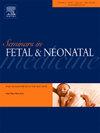供体母乳巴氏灭菌方法及其对坏死性小肠结肠炎乳成分的影响。
IF 2.9
3区 医学
Q1 PEDIATRICS
引用次数: 0
摘要
坏死性小肠结肠炎(NEC)是一种主要发生在早产儿的肠道疾病。虽然对NEC没有明确的治疗方案,但母乳对早产儿NEC的发展有保护作用。然而,人乳成分是高度动态的,含有许多生物活性成分,可能受到母体和围产期因素的影响。此外,在没有母乳的情况下,会使用经过池化和巴氏消毒等严格准备过程的捐赠母乳。不同的巴氏灭菌方法可能对人乳的生物活性成分产生影响。在这篇综述中,我们探讨了目前关于母乳在预防NEC中的益处的文献。我们进一步回顾了人乳的生物活性成分和微生物组,以及影响人乳样品之间乳含量多样性的许多因素。最后,我们回顾了不同的巴氏灭菌方法及其对母乳成分的影响。本文章由计算机程序翻译,如有差异,请以英文原文为准。
Donor human milk pasteurization methods and the effect on milk components as they relate to Necrotizing enterocolitis
Necrotizing enterocolitis (NEC) is an intestinal disease that predominantly occurs in preterm infants. While there are no definitive treatment options for NEC, the administration of human milk is protective against the development of NEC in preterm infants. However, human milk composition is highly dynamic, containing numerous bioactive components that can be affected by both maternal and perinatal factors. Furthermore, when maternal milk is unavailable, donor human milk, which goes through a rigorous preparation process including pooling and pasteurization, is used. The different pasteurization methods can have implications for the bioactive components of human milk. In this review, we explore the current literature surrounding the benefits of human milk in the prevention of NEC. We further review the bioactive components and the microbiome of human milk and the many factors that affect the diversity of milk content between human milk samples. Finally, we review the different methods of pasteurization and their effects on the components of human milk.
求助全文
通过发布文献求助,成功后即可免费获取论文全文。
去求助
来源期刊
CiteScore
6.40
自引率
3.30%
发文量
49
审稿时长
6-12 weeks
期刊介绍:
Seminars in Fetal & Neonatal Medicine (formerly Seminars in Neonatology) is a bi-monthly journal which publishes topic-based issues, including current ''Hot Topics'' on the latest advances in fetal and neonatal medicine. The Journal is of interest to obstetricians and maternal-fetal medicine specialists.
The Journal commissions review-based content covering current clinical opinion on the care and treatment of the pregnant patient and the neonate and draws on the necessary specialist knowledge, including that of the pediatric pulmonologist, the pediatric infectious disease specialist, the surgeon, as well as the general pediatrician and obstetrician.
Each topic-based issue is edited by an authority in their field and contains 8-10 articles.
Seminars in Fetal & Neonatal Medicine provides:
• Coverage of major developments in neonatal care;
• Value to practising neonatologists, consultant and trainee pediatricians, obstetricians, midwives and fetal medicine specialists wishing to extend their knowledge in this field;
• Up-to-date information in an attractive and relevant format.

 求助内容:
求助内容: 应助结果提醒方式:
应助结果提醒方式:


